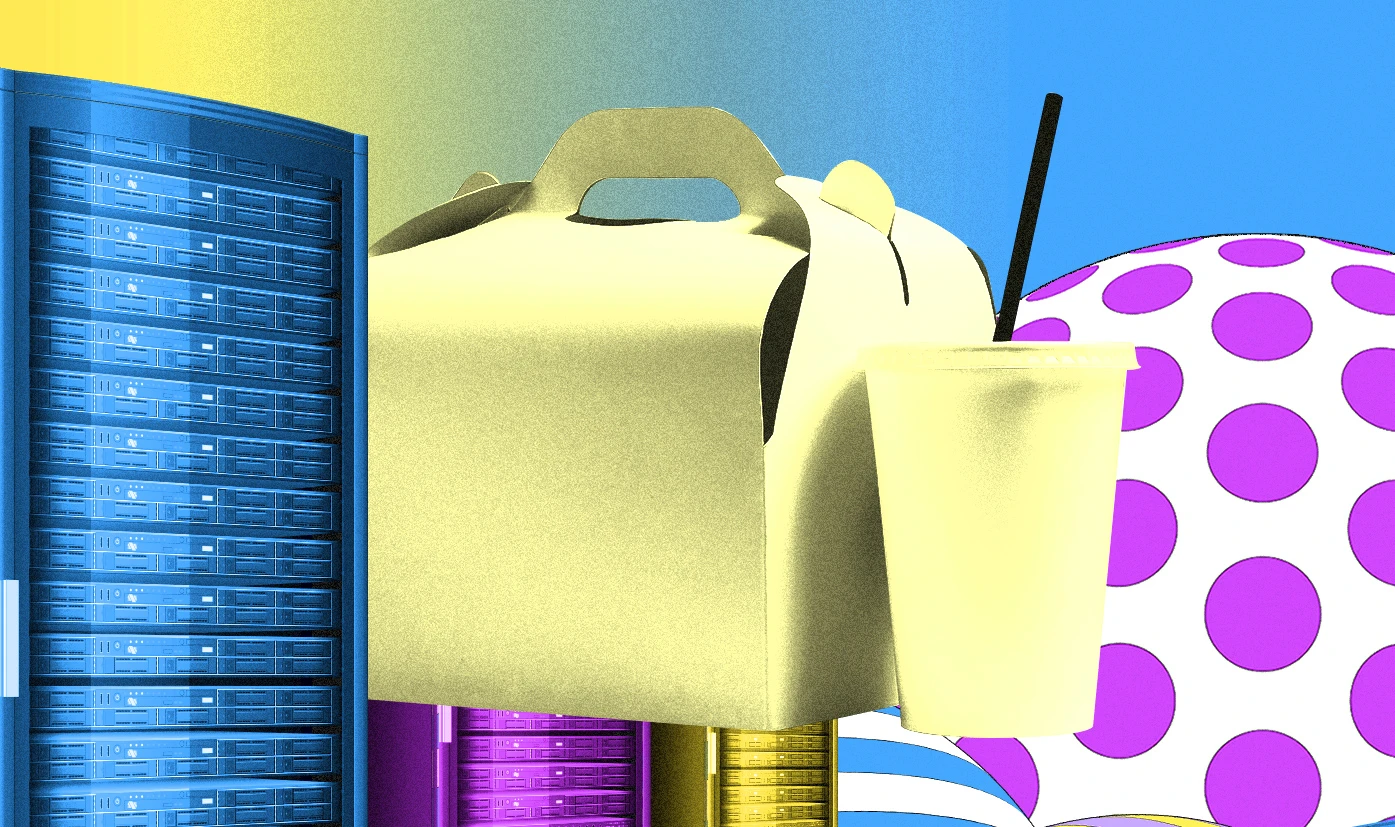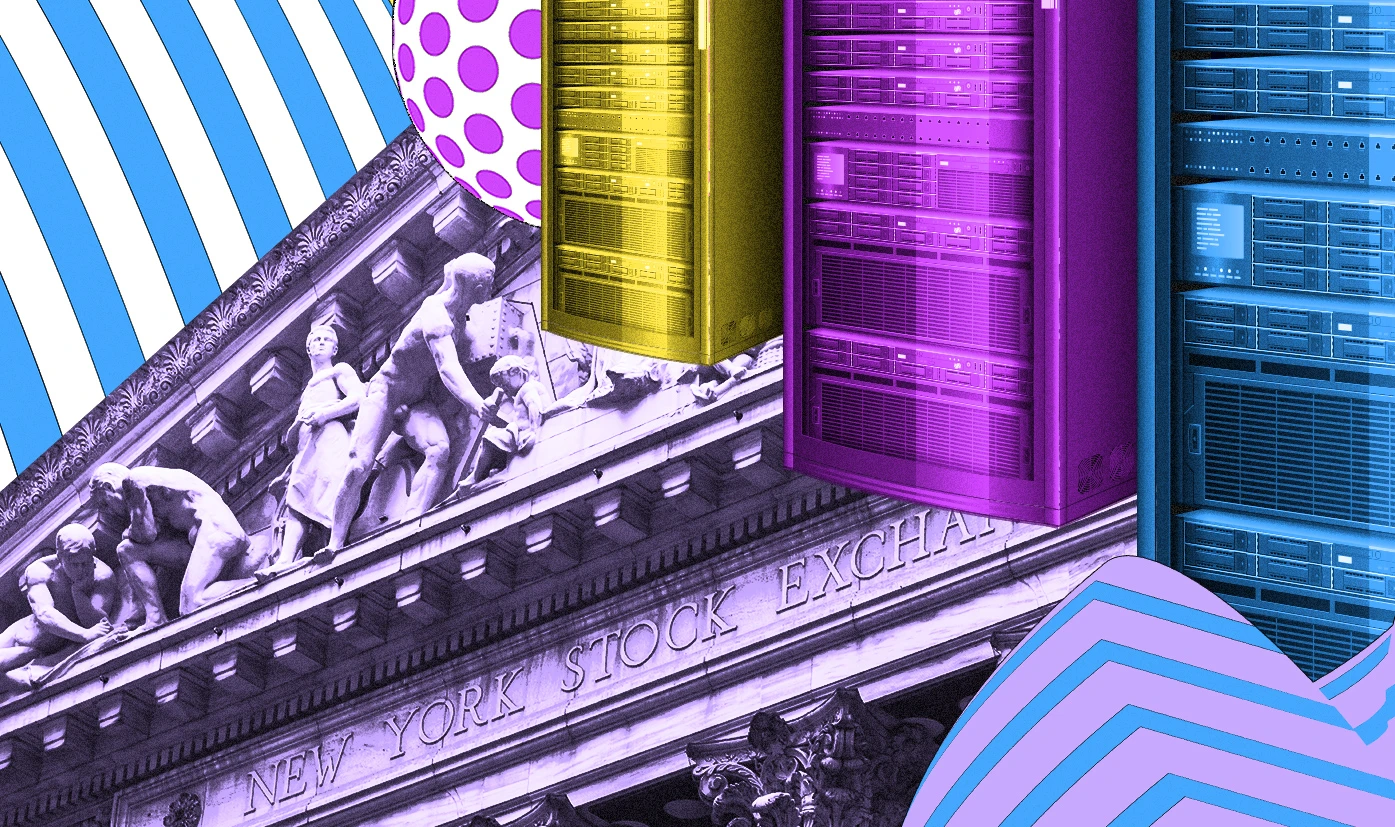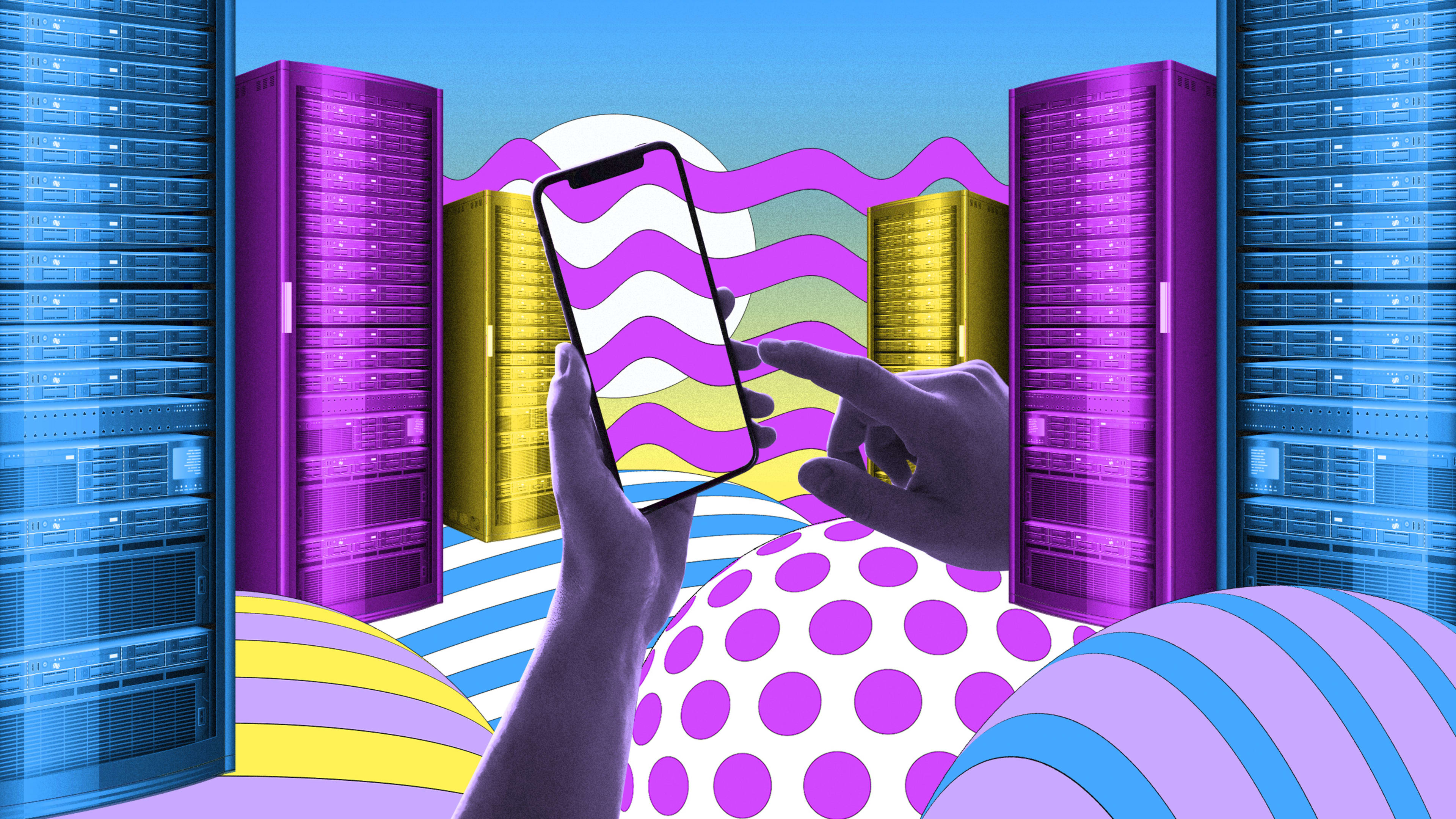The 1980s have gone down in history as the decade of excess (as if the gas-guzzling V8 cars of the 1970s or the rise of fast fashion in the 1990s never happened). But the 2010s have put it all to shame.
This was the decade where convenience crushed everything else. Prime two-day shipping became not a luxury, but a way of life—that would give way to one-day shipping, then same-day shipping. Grubhub, Doordash, and Uber Eats became the ubiquitous, on-demand service to have any delicacy delivered. We had the explosion of smartphones, built from rare, mined materials. These were the supercomputers in our pockets, but due to planned obsolescence, fundamental fragility, or just the promise of “thinner, faster, better,” they still mandated upgrades every 12 to 24 months (no matter the consequence). Over the past decade, so many of the consequences of consumption became invisible: We forget that every search we make or song we stream has a cost: The cloud is really a server farm that needs impossible amounts of energy—though that did nothing to quell the cryptocurrency boom.
None of this hit home until the last days of 2019, when I reached out to experts—who specialize in everything from packaged food to airline travel to architecture—asking them to share their predictions for their industries in 2030. And while I said nothing about the environment, it was top of mind for almost everyone.

How we’ll eat in 2030
“The products we choose to consume are more important than the clothes we wear or the cars we drive. People don’t post pictures of their cars, but they post pictures of their food regularly. They want their friends to know two things: 1) what new thing they have discovered, and 2) what the decision to consume it says about them. This spirit of sharing and discovery has made people more adventurous, but where it was once about a specific in-restaurant dining experience, it now extends to everyday consumption of snacks and beverages.
“Thankfully, advancements in e-commerce infrastructure have allowed our industry to make more product varieties available to consumers.
“The tension we will face going forward is balancing consumer demand for endless options with the inconvenience of having to actually make choices. Choices can sometimes create friction in the purchasing process. We will have to design and deliver indispensable offerings and provide consumers with the knowledge and guidance to select products that best meet their needs.
“Related: How will consumers balance the struggles of prioritizing sustainability with the need for convenience? Our consumers’ need for convenience is real, and it’s not going away—that’s why delivery is on the rise. However, convenience creates waste: bags, boxes, plasticware. When my team is innovating at PepsiCo, sustainability is one of the top considerations. In the future, packaging must be more responsible while still being portable.” —Dena vonWerssowetz, senior marketing director for global beverages, PepsiCo

How we’ll travel in 2030
“With absolute certainty, climate change will be the defining force in the next decade for all of us. There will be a growing earnestness to rethink how we live, work, and move around in response to conspicuous signals that we’re in trouble, from everyday tidal flooding to increasingly bizarre weather. Despite these alarm bells, the challenge ahead for designers will be to reconcile these necessary changes with our penchant for greed and laziness as consumers. This can be done, though, and here are two opportunities that fit this bill.
“First, not moving around as we much as we do now will become a focus, especially for private and public employers compelled to curb business travel in the interest of reducing their carbon footprints. The design opportunity here is to create all-new ways of replicating in-person collaborations. Forget videoconferencing, which is a cave person version of what’s ahead. Instead, there will be breakthroughs in extended reality, robotics, and smart surfaces that let us transcend geography.
“Second, we’ll have to be a lot more efficient when we are moving around. All transportation will become intermodal (meaning it orchestrates handshakes with other modalities) and multifunctional (meaning it does more than just one thing). Jammed city infrastructures will not tolerate one-dimensional vehicles that just deliver people or just deliver freight. This will require new vehicle form factors that are born of co-designing. Earlier in the decade, vehicles that are actually designed for both ride-sharing and delivering food and parcels will emerge. Later on, we’ll see wilder mashups between cars and non-automotive brands that offer entirely new mobility experiences.” —Devin Liddell, principal futurist, Teague

How we’ll value companies in 2030
“Whether it’s CEOs declaring the need to redefine capitalism or the climate movement sparked by Greta Thunberg, there is a reexamination of fundamentals afoot: of the place and purpose of governments, businesses, and individuals in society. As we look at what’s ahead, we’re seeing a groundswell of people—enabled by digital—exerting pressure on organizations to redefine their success in ways other than financial growth alone. People want their purchases to reflect the social, environmental, and political causes they care about. After a long streak of pure profit-chasing, this is an epoch-defining opportunity for companies to reimagine their business models, services, and products around new definitions of value—to switch from digital transformation to purpose-led transformation.
“We’ll see more leaders espouse purpose—and then get caught up because it’s not aligned with some element of their operation. This reality is going to be really hard to resolve because as we transition, everyone is open to critique about something. Social media may not make plastic or dig up minerals that cannot be renewed, but it is open to criticism that it is causing social and political distress. Retailers may shift to ethically sourced products, but ship from halfway across the planet. The important thing is to start—and that means with metrics. French corporate services giant Sodexo, with a number-driven emphasis on cutting food waste, is a great example. Could they reinvent everything they do? Probably. Should they start somewhere (and they have)? Yes. Ethical paralysis is not an option and will be called out. We believe it is better to be on the journey and admit you have a distance to go than burying your head. There’s a cynical game being played of looking at percentages as they are applied to contributors to global warming. There is always a sector more responsible than yours for CO2 emissions for example. But if we all take that approach, then nothing changes.
“Over the next few years the idea of ‘consumer’ will come to feel really backward as a label—like the idea of ‘servant’ is pretty awkward in the 21st century. As causes grow as a motivation for purchase, we will see companies try to grow a direct link between the purpose of their employees and that of their customers, and to grow that as a direct connection. If you look at Bo, a new U.K. bank from RBS—they are explicitly trying to help their customers develop better money habits—as they say ‘you do a little, we do a little.’ It’s not hard to imagine a next step that connects their employees directly to customer outcomes.
“As people begin to shift from a ‘me’ to ‘we’ mindset, tomorrow’s success stories will belong to organizations that design with all life in mind. As designers, we must begin to address people as part of a greater ecosystem, embracing a broader, more holistic systems mindset that starts to make the traditional user-centered design approach sound way too self-centered.” —Mark Curtis, cofounder and chief client officer, Fjord

How we’ll build in 2030
“In the next decade I believe experiential design will play a greater role and impact lives as people interact with the built environment. With the launch of 5G technology, the ability to create and transmit massive amounts of new content while we’re in constant motion and engaging—in real time—with the built environment will be a major disrupter in communities. Experiential design’s elevation to customizable and personal experiences that are built around individual behaviors and preferences will impact daily actions from a healthcare doctor visit, to educational experiences at two- and four-year institutions, to even vacations.
“Imagine if you’re a history buff, standing at the base of the Statue of Liberty. You’re presented—based on your profile and interests—information as to how Lady Liberty was created and built. Then you’re connected to details about Ellis Island regarding immigrant passengers, maybe even about your ancestors and the ships they arrived on. Instead of going back and researching, the information is curated and accessible in real time. Our engagement impact within the built world will be defined not only by what we see and feel, but with tailored experiences and information.
“I believe the next decade will couple and improve these individual experiences with a greater focus on personalized health. With companies designing more high-tech wearables that gauge and record data, knowledge focused on healthy lifestyle and well-being choices will shape physical spaces, from college recreation spaces to athletic performance and research facilities, where the built and virtual environments become more integrated and seamless.” —Bradley Lukanic, CEO, CannonDesign

How nothing might change by 2030
“While ‘tech’ boosters, hypemongers, and Davos dwellers continue to proclaim that we are living in a moment of technological ‘revolution,’ economists, historians, and other observers have been telling a different story over the last decade: that we have been experiencing an extended period of slow economic and productivity growth since the 1970s. One possibility is that this period of slow growth will keep on going for many years, a potential some economists are, in fact, predicting. Overhyped and buzzword-laden technologies—like today’s ubiquitous ‘AI’—will continue to underperform on expectations and incremental change will remain the norm.
“Part of what makes meaningful growth so hard is that we underestimate the amount of significant change that has taken place over the last 150 years. Uber and Lyft provide some improvement over taxis, but that advance is not as great as the ones humans experienced earlier through the invention of automobiles, concrete and asphalt roads, and, well, taxi companies themselves. The difficulty in creating deep change is reflected in companies failing to produce profits. Lyft and, especially, Uber have struggled to be profitable, but so have WeWork, Tesla, Twitter, Peloton, and several other hyped firms. Moreover, research productivity in general has decreased over the last 50 years—that is, it takes more human effort and money to produce new research—perhaps in part, because, as some argue, all of the ‘low-hanging fruit’ of technological and scientific change has been plucked. While boosters will always argue that some revolutionary technology, be it nanotechnology or true AI, is just over the horizon, there’s really no reason to go along with such predictions or assume that our extended period of slow growth will end soon.
“In this possible low growth future, our infrastructure will continue to degrade, and we will persist in our mastery of not acting to stop global climate change. Designers might capitalize on this moment by creating cheap solutions for consumers to adapt to their ever-warming world. But designers might also find their work increasingly casualized and precarious, as employers turn to temp labor and Uber-like apps that define designers as ‘partners,’ not employees. Jobs will come and go, but wages will remain stagnant. This isn’t your grandparents’ dystopia, a Blade Runner-esque hellscape of skyscrapers, androids, and flying cars, but rather something not much different than what we live in now, just continuing to molder.” —Lee Vinsel, assistant professor of science, technology, and society at Virginia Tech
Recognize your brand’s excellence by applying to this year’s Brands That Matter Awards before the final deadline, June 7.
Sign up for Brands That Matter notifications here.
